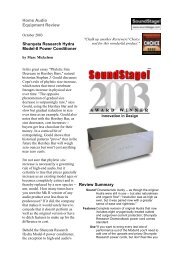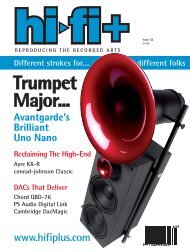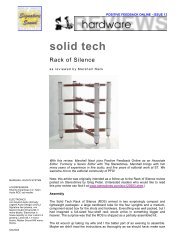Tangential Pivoted Tonearm
Tangential Pivoted Tonearm
Tangential Pivoted Tonearm
Create successful ePaper yourself
Turn your PDF publications into a flip-book with our unique Google optimized e-Paper software.
Solutions out of a Century<br />
To reduce or minimize the falsification of the scanning, a lot of different<br />
solutions have been chosen since the invention of the phonograph<br />
in 1887. The first patent of a tangential installation in 1923<br />
shows still the most spread method of resolution. The pick-up is linearly<br />
guided, exactly as the cutting of the masters. You can find<br />
active (driven by a motor) or passive (smoothly running) systems.<br />
The drawbacks of the linear principle can be considered the extraordinary<br />
technical charges to minimise the friction or the continuous<br />
correction of the carriage, because of the angular deviation. Often<br />
this asks for many different units and sensitive constructions.<br />
The only non-linear solution that was produced in series is the famous<br />
Garrard Zero-100. A parallelogram construction with its pivot<br />
bearing, which is changing the crank angle of the Headshell<br />
constantly and reduces the tracking error to 0.43°. We find resembling<br />
methods of resolution at Burne-Jones and others, mostly<br />
two armed constructions. By regarding from the mathematical and<br />
geometrical perspective we realise that the tracking error has been<br />
minimised but not kept back completely. In this way we can’t speak<br />
from a tangential scanning but rather from a improvement of the<br />
tonearm geometry in consequence of the ingenious correction of the<br />
crank angle.<br />
11



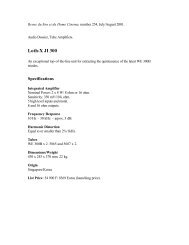

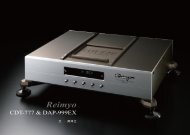

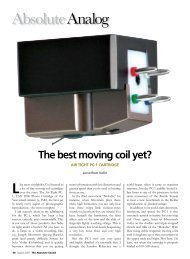
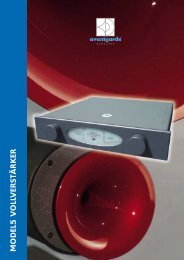
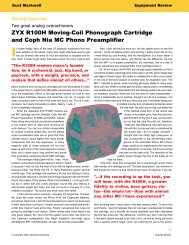
![DAP-999 EX Limited [pdf] - Audio Note Singapore](https://img.yumpu.com/27191044/1/190x253/dap-999-ex-limited-pdf-audio-note-singapore.jpg?quality=85)
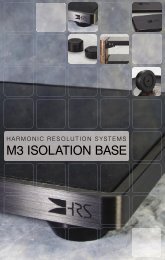
![Harmonix CS-120 Improved-Version [pdf]](https://img.yumpu.com/24411255/1/184x260/harmonix-cs-120-improved-version-pdf.jpg?quality=85)
